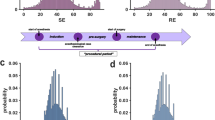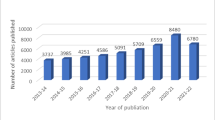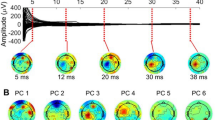Abstract
Analysis of the character and systemic organization of cerebral reactions to external effects aids in adequate evaluation of functional and adaptive human capabilities in norm and pathology. Changes in the spatiotemporal organization of the EEG (according to visual and spectral coherence analyses, as well as localization of equivalent dipole sources of pathological EEG phenomena) and the electrooculogram in response to afferent stimuli at different stages of postcomatose recovery of mental activity were studied in 84 patients with severe brain injury in a prolonged postcomatose unconscious state. Both standard indifferent (a rhythmically flashing light and an acoustic tone) and functionally significant (a moving contrasting black-and-white strip, a red spot, the mother’s voice, music, etc.) afferent stimuli were used. Functionally different reactive changes in the EEG were detected even in deep inhibition of consciousness (a vegetative state). EEG reactions including a strengthening of pathological foci in the CNS with dominant features suggested a poor prognosis. In the absence of such foci, a positive activating effect on mental recovery was found for afferent stimulation, in particular, functionally significant stimulation. Selective sensitivity of the CNS to certain external stimuli was observed for certain unconscious states.
Similar content being viewed by others
REFERENCES
Teasdale, G., Murray, G., Panken, L., and Jennet, B., Adding up the Glasgow Coma Score, Acta Neurochir., 1979, suppl. 28, p. 13.
Konovalov, A.N., Samotokin, B.A., Vasin, N.Ya., et al., To the Integrated International Classification of Brain Injury, Zh. Nevropatol. Psikhiatr. im. S.S. Korsakova, 1985, vol. 85, no.6, p. 651.
Ohta, T., Yamashita, S., Ozaki, T., et al., “Vegetative Sydrome:” Its Definition and Classification, Traumatology, 1975, no. 6, p. 166.
Dobrokhotova, T.A., Grindel’, O.M., Bragina, N.N., et al., Recovery of Consciousness after Prolonged Coma in Patients with Severe Brain Injury, Zh. Nevropatol. Psikhiatr. im. S.S. Korsakova, 1985, vol. 85, no.5, p. 720.
Dobrokhotova, T.A., Potapov, A.A., Zaitsev, O.S., and Likhterman, L.B., Reversible Postcomatose Unconscious States, Sots. Klin. Psikhiatriya, 1996, no. 2, p. 26.
International Working Party Report on the Vegetative State, London: Royal Hospital for Neuro-Disability, 1996.
Dobrokhotova, T.A., Zaitsev, O.S., and Gogitidze, N.V., Psikhostimuloterapiya v reabilitatsii bol’nykh s tyazheloi cherepno-mosgovoi travmoi (metodicheskiye rekomendatsii) (Psychostimulating Therapy in Rehabilitation of Patients with Severe Brain Injury Accompanied by Prolonged Coma (Methodical Recommendations)), Moscow: Min. Zdravookhr., 1991.
Dobrokhotova, T.A., Sharova, E.V., Zaitsev, O.S., and Sergienko, E.A., Psychiatric Aspect of the Problem of Adaptation of Patients with Severe Brain Injury and Prolonged Coma, Vopr. Neurokhir., 1992, no. 1, p. 29.
Zaitsev, O.S., Dobrokhotova, T.A., Gogitidze, N.V., and Sharova, E.V., RF Patent N2073532, 1997.
Sumckii, L. I., Neurophysiological Mechanisms of Cerebral Coma), Doctoral (Med.) Dissertation, Moscow: Sechenov Moscow Med. Inst., 1986.
Ohira, T. and Nakamura, Y., Persistent Vegetative State—Its Clinical and Electrophysiologicial Characteristics, Proc. 1st Annual Meeting of the Society for Treatment of Coma, Takamura, K. and Kanno, T., Eds., Kyoto, 1992, vol. 1, p. 13.
Shchekut’ev, G.A., Potapov, A.A., Bragina, N.N., and Manevich, A.Z., Evoked Potentials, Klinicheskoye rukovodstvo po cherpno-mozgovoi travme (Clinical Guide on Brain Injury), Konovalov, A.N., Likhterman, L.B., and Potapov, A.A., Eds., Moscow: Antidor, 1998, p. 387.
Sharova, E.V., Oknina, L.B., Potapov, A.A., et al., Component P300 of the Auditory Evoked Potential in Post-traumatic Vegetative State, Zh. Vyssh. Nervn. Deyat., 1998, vol. 48, issue 4, p. 719.
Pfurtscheller, G., Schwarz, G., and List, W., Long-Lasting EEG Reactions in Comatose Patients after Repetitive Stimulation, EEG Clin. Neyrophysiol., 1986, vol. 64, p. 402.
Rath, S.A. and Klein, H.J., Current Application of the EEG in the Comatose Neurosurgical Patients, Am. J. EEG Technol., 1991, vol. 31, p. 65.
Wilson, S.L., Cranny, S., and Andrews, K., The Efficacy of Music for Stimulation in Prolonged Coma—Four Single Case Experiments, Clin. Rehabilit., 1992, vol. 6, p. 181.
Beverly, L., The Goals of Sensory Stimulation Programs, Headlines, 1992, nos. 7–8, p. 16.
Dobronravova, I.S., Reorganization of Brain Electrical Activity upon Inhibition and Recovery of Consciousness (Cerebral Coma), Doctoral (Med.) Dissertation, Moscow: Moscow State Univ., 1996.
Sharova, E.V., Sergienko, E.A., Trishina, E.M., et al., Brain Reactions to External Events in Posttraumatic Vegetative State, Int. Conf. on Recent Advantages in Neurotraumatology (ICRAN): Abstracts, Riccione, Italy, 1996, p. 307.
Zhavoronkova, L.A., Maksakova, O.A., Smirnova, N.Ya., et al., Interhemispheric Coherent Relationships in the EEG during Rehabilitation of Patients with Severe Brain Injury, Fiziol. Chel., 2001, vol. 27, no.2, p. 5.
Dobrokhotova, T.A. and Zaitsev, O.S., Psychopathology of Brain Injury, Klinicheskoye rukovodstvo po cherepnomozgovoi travme (Clinical Guide on Brain Injury), Konovalov, A.N., Likhterman, L.B., and Potapov, A.A., Eds., Moscow: Antidor, 1998, p. 269.
Myagi, M.A., Prolonged Unawareness States, Cand. Sci. (Med.) Dissertation, Tartu, 1969.
Sharova, E.V., Adaptive Compensatory Changes in Brain Bioelectrical Activity in Humans with Damaged Brainstem Structures, Doctoral (Biol.) Dissertation, Moscow, 1999.
Boldyreva, G.N., Sharova, E.V., and Dobronravova, I.S., The Role of Regulatory Brain Structures in the Formation of the EEG in Humans, Fiziol. Chel., 2000,vol. 26, no.5, p. 19.
Mit’kin, A.A., Sergienko, E.A., and Yamshikov, A.N., Some Forms of Oculomotor Behavior in Early Human Ontogeny, in Sistemnyi analiz mehanizmov povedeniya (Systemic Analysis of Behavioral Mechanisms), Moscow: Nauka, 1979, p. 143.
Muir, D. and Fild, J., Newborn Infants Orient to Sounds, Child Dev., 1978, vol. 50, no.4, p. 431.
DeCasper, A.J. and Fifer, W.P., Of Human Bonding: Newborns Prefer Their Mother’s Voices, Science, 1980, vol. 208, no.4546, p. 499.
Sazonova, O.B. and Masherov, E.L., EEG Mapping in the Assessment of Contralateral Blood Circulation in the Brain, Trudy 3-i Mezhdunarodnoi konferentsii “Sovremennoye sostoyaniye metodov neinvazivnoi diagnostiki v meditsine” (Proc. 3rd Int. Conf. “Current State of the Methods of Noninvasive Diagnostics in Medicine”), Gurzuf, Ukraine, 1996, p. 15.
Koptelov, Ya.M. and Gnezditskii, V.V., Analysis of Scalp Potential Fields and Three-Dimensional Localization of Sources of Epileptic Activity of the Human Brain, Zh. Nevropatol. Psikhiatr. im. S.S. Korsakova, 1989, vol. 89, no.6, p. 11.
Zhavoronkova, L.A., Features of the Dynamics of Interhemispheric Relationships of the EEG during the Recovery of Neuropsychic Activity in Humans, Zh. Vyssh. Nervn. Deyat., 1990, vol. 4, isuue 2, p. 238.
Voronov, V.G., Detection of Statistically Significant Features in the EEG Frequency Spectrum and Application of These Methods to Clinical Diagnostic Tasks, Trudy 8-i Mezhdunarodnoi konferentsii “Novyye infotmatsionnyye tekhnologii v meditsine i ekologii” (Proc. 8th Int. Conf. “New Information Technologies in Medicine and Ecology”), Gurzuf, Ukraine, 2000, p. 244.
Sharova, E.V. and Zaitsev, O.S., EEG and EOG of Vegetative Patients in Sensory Stimulation, J. Neurotrauma, 1995, vol. 12, no.3, p. 482.
Sergienko, E.A., Oculomotor Activity upon Complicated Movements of Stimuli, Psichol. Zh., 1981, vol. 2, no.6, p. 57.
Sergienko, E.A., Anticipation in Early Human Ontogeny, Doctoral (Med.) Dissertation, Moscow: Inst. Psychol., 1997.
Rusinov, V.S., Dominanta: electrofiziologicheskoye isslidovaniye (Dominant: An Electrophysiological Study), Moscow: Meditsina, 1969.
Alekseeva, G.V., Alferova, V.V., Gorshkova, V.V., et al., Additional Prognistically Significant Signs in Patients with Long-Lasting Unawareness States, Tezisy dokladov Pervogo Possiiskogo Congressa po Patofisiologii (Abstracts of 1st Congr. on Pathophysiology), Moscow, 1996, p. 291.
Tsubokawa, T., Deep Brain Stimulation Therapy for a Persistent Vegetative State, J. Neurotrauma, 1995, vol. 12, no.3, p. 345.
Gimranov, R.F., Transckranial’naya magnitnaya stimulyatsiya (Transcranial Magnetic Stimulation), Moscow, 2002.
Handbook of Transcranial Magnetic Stimulation, Pascual-Leone, A., Davey, N.J., Rothwell, J., et al., Eds., London, New York, New Delhi, 2002.
Sharova, E.V., Amcheslavskii, V.G., Potapov, A.A., et al., EEG Effects of Therapeutic Electric Stimulation of the Human Brain in the Posttraumatic Unawareness State, Fiziol. Chel., 2001, vol. 27, no.2, p. 29.
Author information
Authors and Affiliations
Additional information
__________
Translated from Fiziologiya Cheloveka, Vol. 31, No. 3, 2005, pp. 5–15.
Original Russian Text Copyright © 2005 by Sharova.
Rights and permissions
About this article
Cite this article
Sharova, E.V. Electrographic Correlates of Brain Reactions to Afferent Stimuli in Postcomatose Unconscious States after Severe Brain Injury. Hum Physiol 31, 245–254 (2005). https://doi.org/10.1007/s10747-005-0041-0
Received:
Issue Date:
DOI: https://doi.org/10.1007/s10747-005-0041-0




